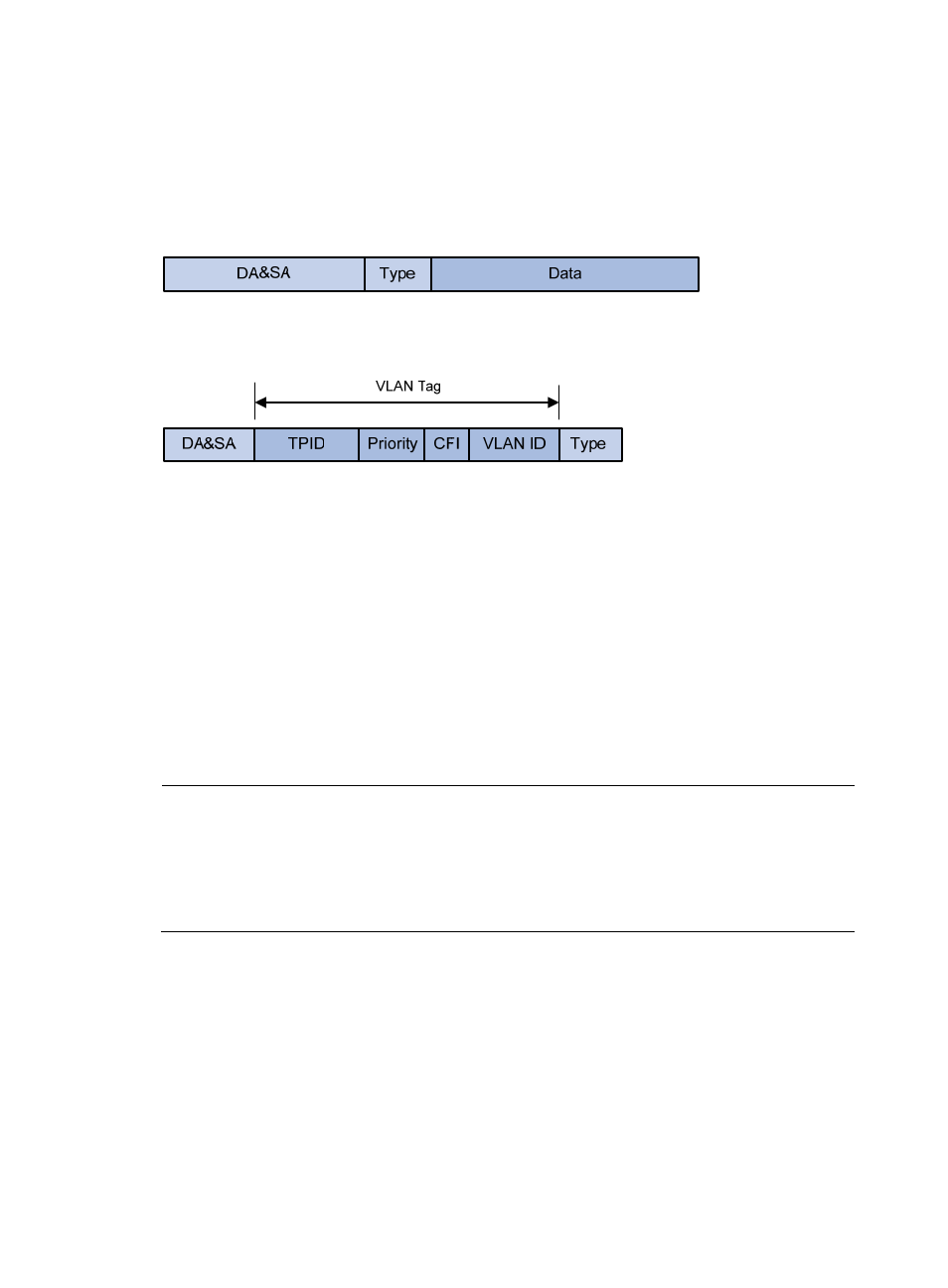Vlan types – H3C Technologies H3C S10500 Series Switches User Manual
Page 125

114
The format of VLAN-tagged frames is defined in IEEE 802.1Q issued by the Institute of Electrical and
Electronics Engineers (IEEE) in 1999.
In the header of a traditional Ethernet data frame, the field after the destination MAC address and the
source MAC address is the Type field, which indicates the upper layer protocol type, as shown in
.
Figure 36 Traditional Ethernet frame format
IEEE 802.1Q inserts a four-byte VLAN tag after the DA&SA field, as shown in
Figure 37 Position and format of VLAN tag
The fields of a VLAN tag are tag protocol identifier (TPID), priority, canonical format indicator (CFI), and
VLAN ID.
•
The 16-bit TPID field with a value of 0x8100 indicates that the frame is VLAN-tagged.
•
The 3-bit priority field indicates the 802.1p priority of the frame.
•
The 1-bit CFI field specifies whether the MAC addresses are encapsulated in the standard format
when packets are transmitted across different media. A value of 0 indicates that MAC addresses
are encapsulated in the standard format. A value of 1 indicates that MAC addresses are
encapsulated in a non-standard format. The value of the field is 0 by default.
•
The 12-bit VLAN ID field identifies the VLAN that the frame belongs to. The VLAN ID range is 0 to
4095. Because 0 and 4095 are reserved, a VLAN ID actually ranges from 1 to 4094.
A network device handles an incoming frame depending on whether the frame is VLAN tagged, and the
value of the VLAN tag, if any. For more information, see “
Introduction to port-based VLAN
NOTE:
•
The Ethernet II encapsulation format is used here. Besides the Ethernet II encapsulation format, Ethernet
also supports other encapsulation formats, including 802.2 LLC, 802.2 SNAP, and 802.3 raw. The
VLAN tag fields are added to frames encapsulated in these formats for VLAN identification.
•
When a frame carrying multiple VLAN tags passes through, the switch processes the frame according
to its outer VLAN tag, and transmits the inner tags as payload.
VLAN types
You can implement VLANs based on the following criteria:
•
Port
•
MAC address
•
Protocol
•
IP subnet
•
Policy